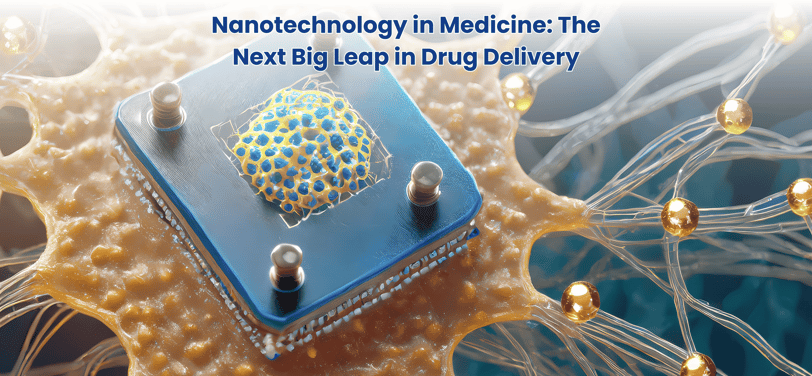Nanotechnology in Medicine: The Next Big Leap in Drug Delivery
The field of medicine is constantly evolving, with innovations that push the boundaries of treatment possibilities. One of the most groundbreaking advancements in recent years is nanotechnology in drug delivery. By utilizing nanoscale materials, researchers are enhancing the precision, efficacy, and safety of drug therapies. But what makes nanotechnology such a game-changer in medicine? Let’s explore.
2/1/20252 min read


What is Nanotechnology in Medicine?
Nanotechnology involves the manipulation of materials at the molecular and atomic levels, typically on a scale of 1 to 100 nanometers. In medicine, this technology is used to develop nanocarriers, which can transport drugs directly to targeted cells, improving therapeutic outcomes while minimizing side effects.
How Nanotechnology is Transforming Drug Delivery
1. Targeted Drug Delivery
One of the most significant advantages of nanotechnology is its ability to deliver drugs precisely to affected cells. By engineering nanoparticles to recognize and bind to specific disease markers, medications can be directed to the exact location where they are needed, reducing damage to healthy tissues and improving treatment effectiveness.
2. Enhanced Bioavailability and Absorption
Many drugs suffer from poor solubility and absorption in the body, leading to reduced effectiveness. Nanotechnology addresses this issue by increasing drug solubility and enhancing bioavailability, ensuring that more of the medication reaches the bloodstream and exerts its intended effect.
3. Controlled and Sustained Release
Nanoparticles can be designed to release drugs in a controlled manner over time, preventing sudden spikes or drops in drug levels. This sustained release mechanism helps maintain optimal therapeutic concentrations for longer periods, reducing the need for frequent dosing and improving patient compliance.
4. Overcoming Biological Barriers
Traditional drug delivery methods often struggle to penetrate biological barriers such as the blood-brain barrier (BBB), which protects the brain from harmful substances but also limits the entry of therapeutic drugs. Nanotechnology enables the design of nano-sized carriers that can traverse these barriers, opening new possibilities for treating neurological disorders like Alzheimer’s and brain tumors.
5. Personalized Medicine Advancements
Nanotechnology is paving the way for personalized drug therapies, where treatments can be tailored to an individual’s genetic makeup and specific disease profile. By using nanodevices that analyze a patient’s biomarkers, doctors can develop customized treatment plans that maximize efficacy and minimize adverse effects.
Challenges and Future Prospects
Despite its immense potential, nanotechnology in medicine faces challenges such as regulatory approvals, large-scale manufacturing, and long-term safety assessments. However, ongoing research and collaborations between pharmaceutical companies, scientists, and regulatory bodies are paving the way for widespread adoption. Future advancements in AI-driven nanomedicine and biodegradable nanoparticles promise even more revolutionary breakthroughs in the coming years.
Conclusion
Nanotechnology is transforming drug delivery by making treatments more targeted, efficient, and safer. With continued advancements, this technology has the potential to revolutionize medicine, improving patient outcomes and addressing some of the most complex medical challenges. As research progresses, nanotechnology will undoubtedly play a critical role in shaping the future of healthcare.
